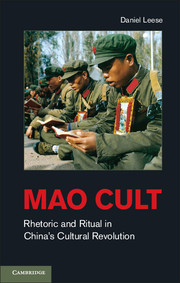Book contents
- Frontmatter
- Contents
- Illustrations, Figures, Maps, and Table
- Preface
- Chronology of Major Events
- Abbreviations
- Map Administrative divisions of China
- Introduction
- Part One Coming to Terms with the “Cult of the Individual”
- Part Two Charismatic Mobilization
- 4 Lively Study and Application
- 5 The Little Red Book
- 6 Spectacles of Worship
- Part Three Cult and Compliance
- Conclusion
- Bibliography
- Glossary
- Index
4 - Lively Study and Application
from Part Two - Charismatic Mobilization
Published online by Cambridge University Press: 07 October 2011
- Frontmatter
- Contents
- Illustrations, Figures, Maps, and Table
- Preface
- Chronology of Major Events
- Abbreviations
- Map Administrative divisions of China
- Introduction
- Part One Coming to Terms with the “Cult of the Individual”
- Part Two Charismatic Mobilization
- 4 Lively Study and Application
- 5 The Little Red Book
- 6 Spectacles of Worship
- Part Three Cult and Compliance
- Conclusion
- Bibliography
- Glossary
- Index
Summary
The major difference between the correct leader cult advocated by Mao Zedong in Chengdu 1958 and its successor after the first Lushan Plenum the following year is to be observed with respect to the object of worship. At the Chengdu conference, Mao had advocated a worship of truth that postulated a dialectical relationship between leader cults and intellectual emancipation. After Lushan, the identity of opposites, of worship and intellectual emancipation, evaporated. References to Chairman Mao and Mao Zedong Thought skyrocketed in the media, especially in PLA publications. The cult, even by Mao’s standards, was turned into an incorrect cult by asking for the worship of an individual at the expense of others. Its primary function was no longer intellectual emancipation but securing personal loyalty, party unity, and control over the army. Peng Dehuai’s resistance to the public leader cult had been taken as a proof of his factional activities. His successor, Lin Biao, therefore came to champion the cult whenever possible in order to avoid Peng’s fate and to use the cult’s cohesive power to curb the devastating impact of the Great Leap Forward.
- Type
- Chapter
- Information
- Mao CultRhetoric and Ritual in China's Cultural Revolution, pp. 89 - 107Publisher: Cambridge University PressPrint publication year: 2011



